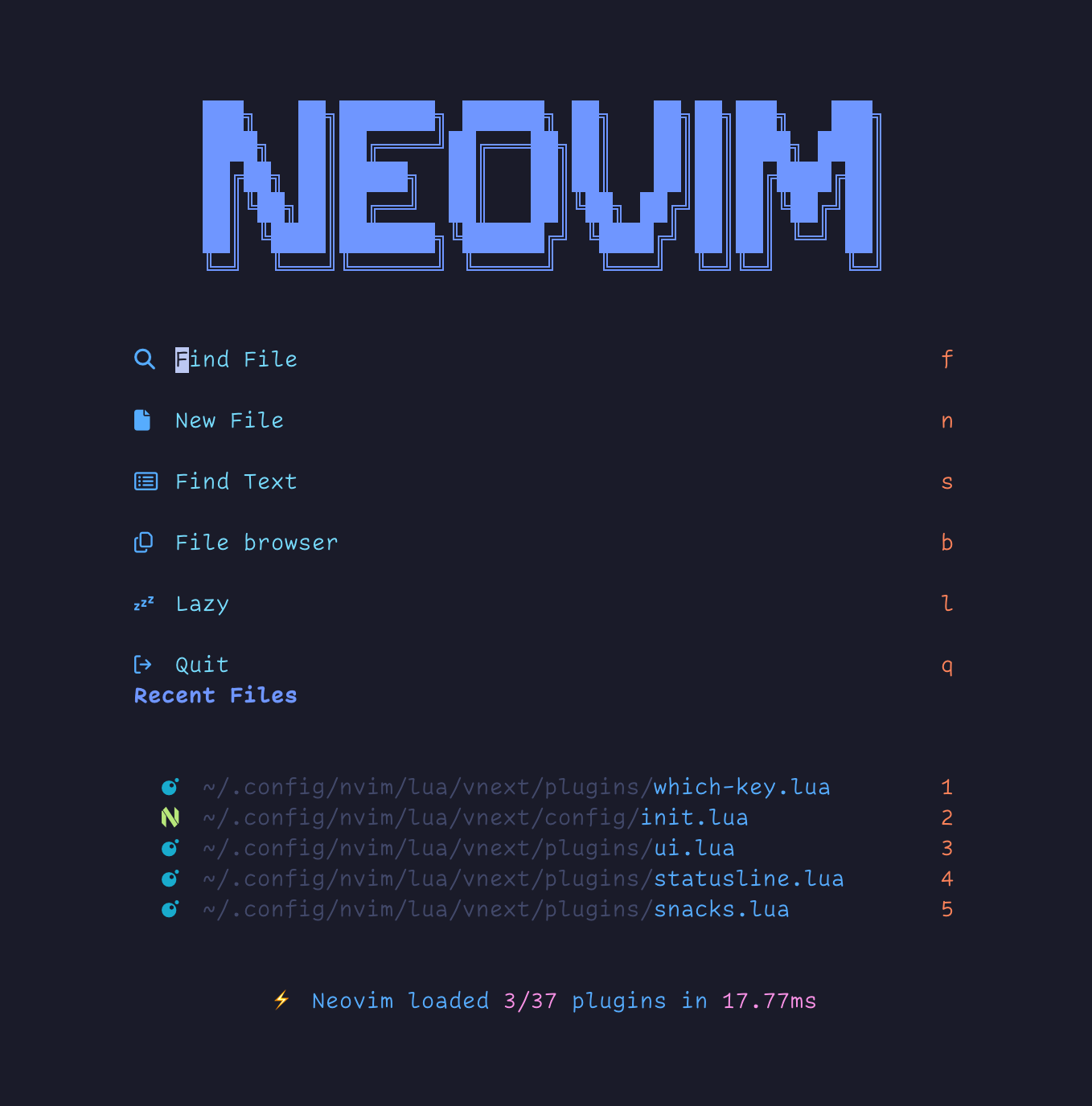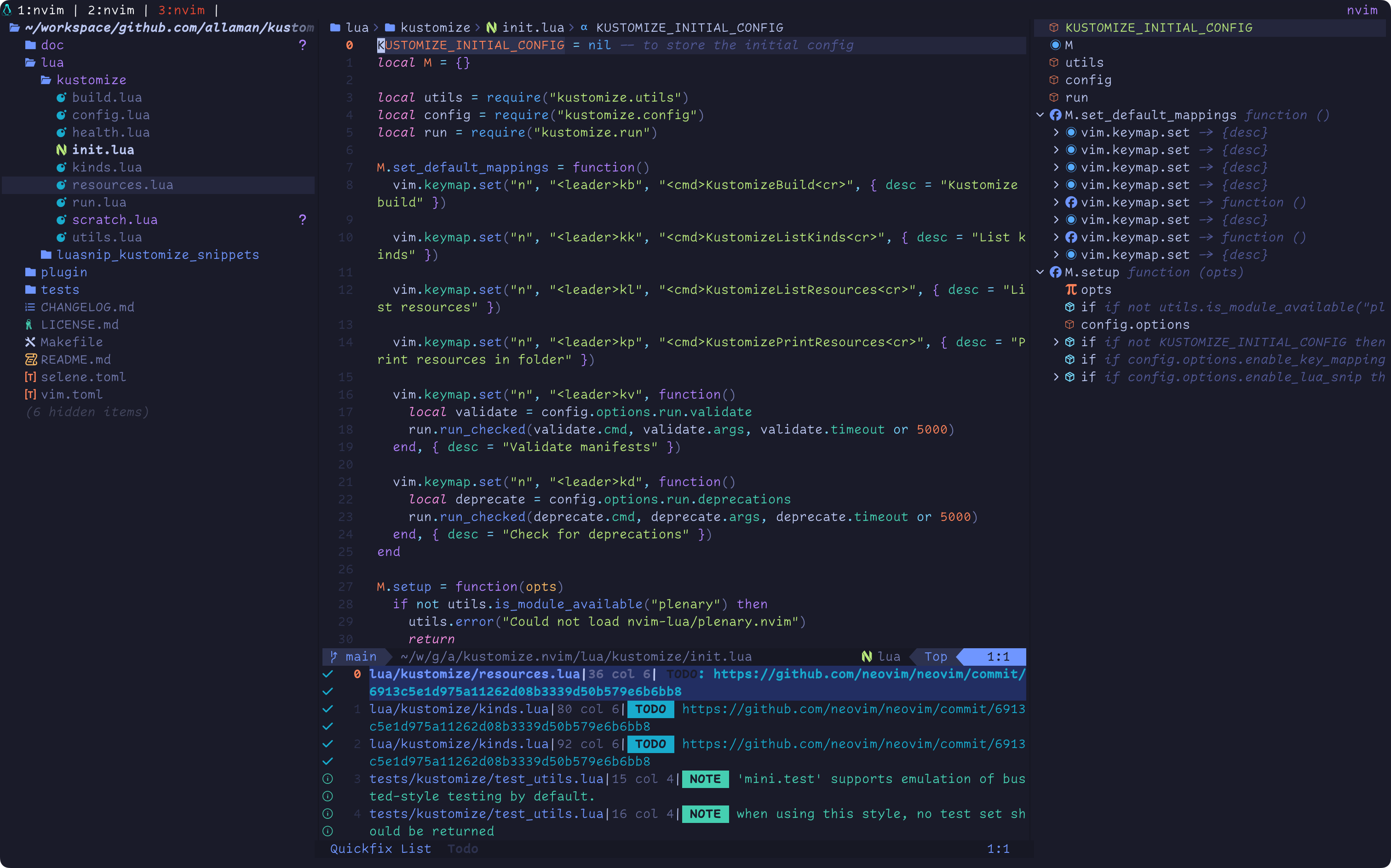README WIP
Terminal: ghostty
Font: Comic Code Ligatures
Neovim Theme: tokyonight.nvim
If you want to use my config there is the ./lua/vnext/extra/ folder that is loaded by lazy.nvim. The LazySpecs in this folder are merged with the "default" LazySpecs in the ./lua/vnext/plugins/ folder. Some examples you can do:
Disable a plugin:
return {
{
"Bekaboo/dropbar.nvim",
enabled = false,
},
}Add new options to a plugin:
return {
{
"echasnovski/mini.surround",
opts = {
search_method = 'nearest',
},
}
}Overwrite options of a plugin:
return {
{
"L3MON4D3/LuaSnip",
opts = {
-- define your own snippets folder
snippets_path = { vim.fn.expand("~/mySnips") },
},
},
}Change keys of a plugin:
return {
{
"MagicDuck/grug-far.nvim",
keys = {
-- stylua: ignore start
{ "<leader>R", hidden = true },
{ "<leader>RG", "<cmd>GrugFar<cr>", desc = "Open" },
{ "<leader>Rg", "<cmd>lua require('grug-far').open({ prefills = { paths = vim.fn.expand('%') } })<cr>", desc = "Open (Limit to current file)"},
{ "<leader>Rw", "<cmd>lua require('grug-far').open({ prefills = { search = vim.fn.expand('<cword>') } })<cr>", desc = "Search word under cursor", },
{ "<leader>Rs", mode = "v", "<cmd>lua require('grug-far').with_visual_selection({ prefills = { paths = vim.fn.expand('%') } })<cr>", desc = "Search selection", },
{ "<leader>X", "", desc = "Search & Replace" },
{ "<leader>XG", "<cmd>GrugFar<cr>", desc = "Open" },
{ "<leader>Xg", "<cmd>lua require('grug-far').open({ prefills = { paths = vim.fn.expand('%') } })<cr>", desc = "Open (Limit to current file)"},
{ "<leader>Xw", "<cmd>lua require('grug-far').open({ prefills = { search = vim.fn.expand('<cword>') } })<cr>", desc = "Search word under cursor", },
{ "<leader>Xs", mode = "v", "<cmd>lua require('grug-far').with_visual_selection({ prefills = { paths = vim.fn.expand('%') } })<cr>", desc = "Search selection", },
-- stylua: ignore end
},
},
}Check out my blog post to learn more about the reasons behind this big change. You can find the previous version in the v1 branch.





